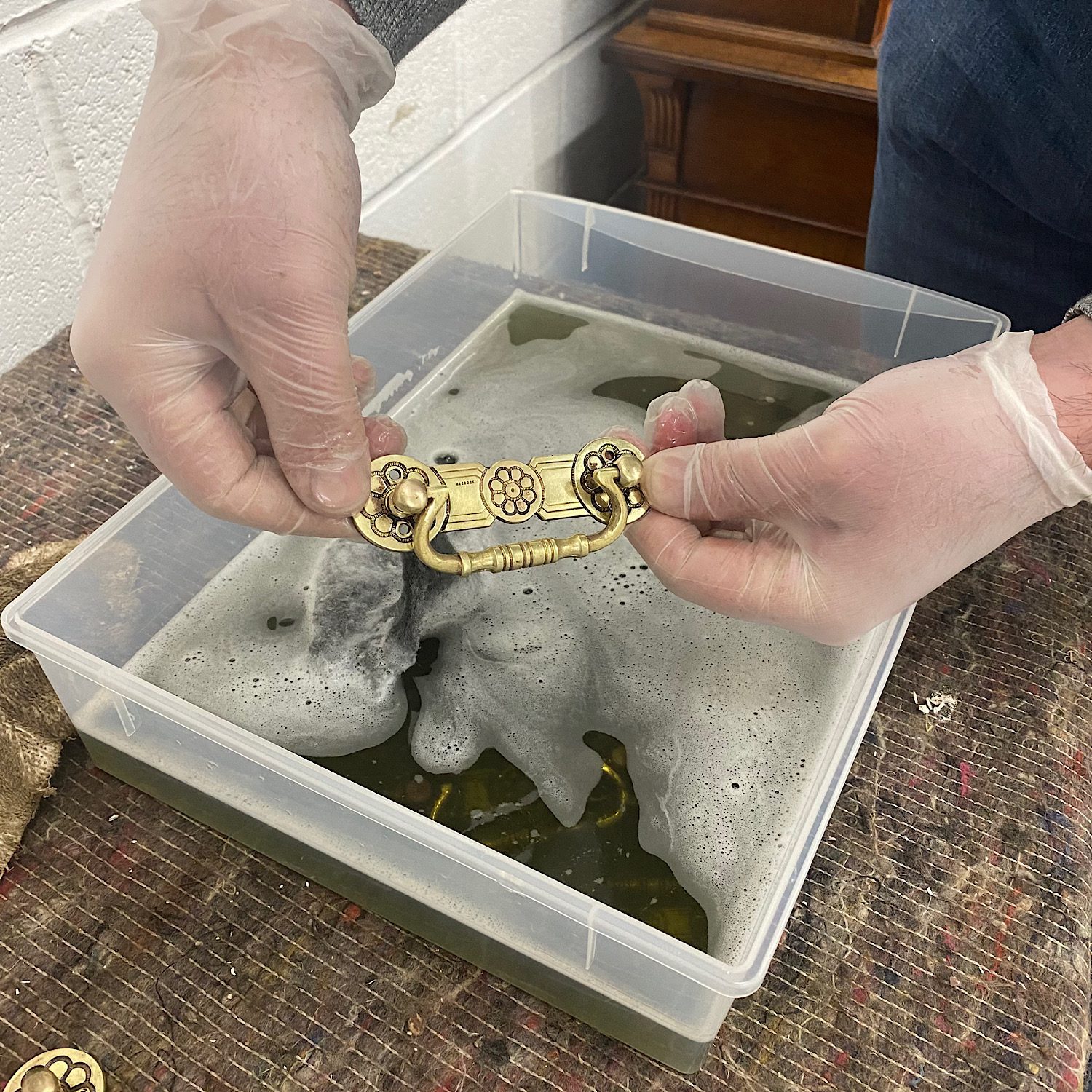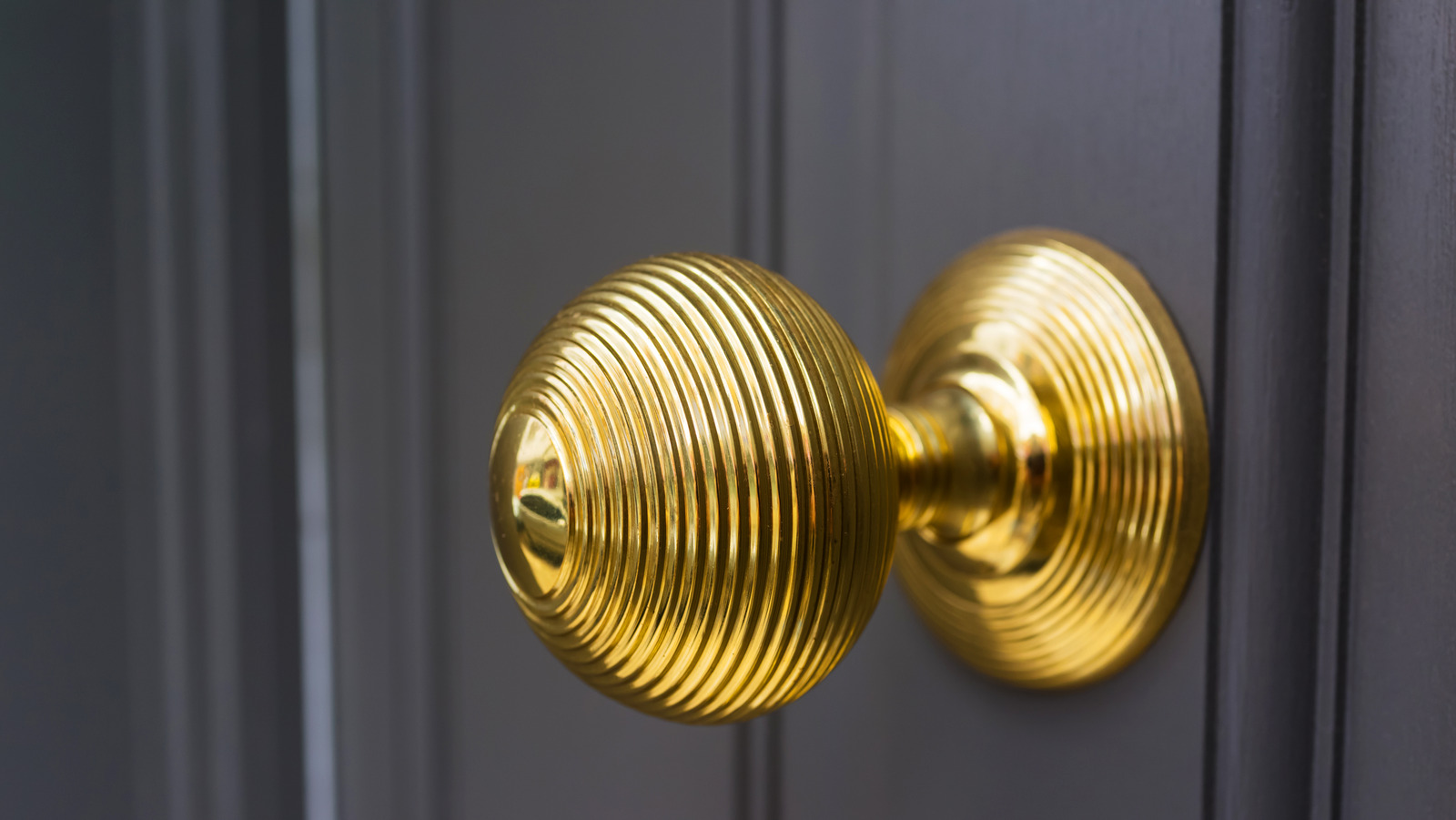Methods for Cleaning Brass Cabinet Handles

Maintaining the luster of your brass cabinet handles elevates the aesthetic appeal of your home. Regular cleaning not only enhances their appearance but also protects them from damage caused by tarnish and corrosion. Choosing the right cleaning method depends on the level of soiling and the desired outcome. Let’s explore three effective approaches.
Brass Handle Cleaning Methods Compared, Best way to clean brass cabinet handles
Three primary methods exist for cleaning brass cabinet handles: using a commercial brass cleaner, a homemade baking soda and vinegar paste, and a simple warm soapy water solution. Each method offers distinct advantages and disadvantages. Selecting the optimal method hinges on the level of grime, the sensitivity of the brass finish, and your personal preference.
| Method | Steps | Materials | Precautions |
|---|---|---|---|
| Commercial Brass Cleaner |
|
Commercial brass cleaner, soft cloths, clean water | Always test the cleaner on an inconspicuous area first to check for any adverse reactions. Follow the manufacturer’s safety instructions carefully. Some cleaners may contain harsh chemicals. |
| Baking Soda and Vinegar Paste |
|
Baking soda, white vinegar, soft cloth or sponge, clean water | Avoid using excessive force, as this could scratch the brass. This method is best for lightly soiled handles. Vinegar can be acidic, so ensure thorough rinsing. |
| Warm Soapy Water |
|
Mild dish soap, warm water, soft cloth or sponge | This is the gentlest method, suitable for regular cleaning. Ensure all soap residue is removed to prevent spotting. |
The Importance of Thorough Rinsing and Drying
Thorough rinsing and drying are crucial steps in maintaining the shine and preventing tarnishing of your brass handles. Any residual cleaning solution or water left on the surface can react with the brass, leading to discoloration and dullness. A properly cleaned brass handle should exhibit a warm, golden luster, free from streaks, smudges, or dull patches. The surface should feel smooth and even to the touch. Imagine the gleam of a newly polished coin – that’s the ideal finish you should aim for. Failure to dry thoroughly can result in water spots or a dull film developing over time.
Preventing Tarnish and Maintaining Shine: Best Way To Clean Brass Cabinet Handles

Preserving the lustrous beauty of your brass cabinet handles requires a proactive approach. Regular maintenance, informed by an understanding of brass’s vulnerabilities, will significantly reduce the need for intensive cleaning and restore the handles’ shine with minimal effort. This preventative maintenance plan focuses on protection and consistent, gentle care.
Protecting your brass from the elements and implementing a simple polishing routine are key to long-term shine. Neglecting these aspects can lead to significant tarnishing, requiring more aggressive cleaning methods which may ultimately damage the finish. A consistent, preventative approach is far more effective and efficient than reactive cleaning.
Preventative Maintenance Strategies
A preventative maintenance plan should incorporate several strategies to minimize tarnishing. Regular dusting prevents the buildup of grime which can accelerate tarnishing. Protecting the handles from excessive moisture and direct sunlight will also significantly extend their lifespan and reduce the frequency of cleaning. For example, in kitchens prone to steam, consider slightly repositioning handles to reduce direct exposure to moisture. Similarly, handles in direct sunlight may benefit from the addition of sheer curtains or blinds. Finally, a gentle polishing with the appropriate materials will maintain the shine and create a protective barrier against further oxidation.
Suitable Polishing Cloths and Materials
Choosing the right materials for polishing is crucial. Harsh abrasives can scratch the surface, negating the benefits of polishing and potentially causing irreparable damage. Therefore, opting for soft, lint-free cloths is essential.
- Microfiber cloths: These cloths are incredibly soft and absorbent, effectively lifting away dirt and grime without scratching. Their fine fibers trap dust particles, leaving the brass gleaming. The non-abrasive nature makes them ideal for regular polishing.
- Soft cotton cloths: A classic choice, soft cotton cloths offer gentle abrasion for polishing, effectively removing tarnish without causing scratches. Ensure they are lint-free for a streak-free finish. Pre-washing to remove any factory treatments is advisable.
- Chamois leather: This naturally soft leather is known for its superior polishing capabilities. Its absorbent nature and gentle texture make it excellent for achieving a high shine, especially after initial cleaning.
- Brass polishing cloths (pre-treated): Commercially available brass polishing cloths often contain mild abrasives and polishing compounds. These are suitable for occasional use to remove stubborn tarnish but should not be used excessively, as overuse can cause scratches over time. Always follow the manufacturer’s instructions.
Environmental Factors and Mitigation
Various environmental factors contribute to brass tarnishing. Understanding these factors and implementing appropriate measures is essential for preservation.
Humidity accelerates the oxidation process, leading to tarnishing. In humid environments, ensuring proper ventilation and using dehumidifiers can significantly mitigate this effect. Direct sunlight also contributes to tarnishing by causing oxidation. Minimizing direct sun exposure through curtains, blinds, or strategic placement of furniture can help prevent this. Dust accumulation acts as a catalyst for tarnishing; therefore, regular dusting is crucial. The accumulation of oils and fingerprints also contributes to tarnishing, hence regular gentle wiping is recommended. In areas with high levels of sulfurous gases (e.g., near industrial areas), protective coatings or more frequent cleaning may be necessary. For example, a museum storing brass artifacts in a high-sulfur environment might employ specialized coatings or more frequent professional cleaning.
Addressing Specific Cleaning Challenges

Cleaning brass cabinet handles might seem straightforward, but you’ll likely encounter some unexpected hurdles. Stubborn stains, unsightly scratches, and even pitting can diminish the beauty of your hardware. Understanding these challenges and knowing how to tackle them is key to keeping your brass gleaming. This section dives into common problems and offers practical, effective solutions.
Common Problems and Their Solutions
Let’s face it: life happens. Kids’ sticky fingers, accidental bumps, and even just the passage of time can leave their mark on your brass hardware. Knowing how to address these issues will ensure your brass stays looking its best. The following solutions provide a step-by-step guide to resolving some of the most frequent cleaning dilemmas.
- Water Spots: These are often easily removed with a simple solution of warm water and mild dish soap. Gently scrub the affected areas with a soft cloth or sponge, rinse thoroughly with clean water, and dry immediately to prevent further spotting. For persistent water spots, try a paste of baking soda and water, gently rubbing it on the brass before rinsing and drying.
- Fingerprints: These are usually the easiest to deal with. A soft, slightly damp cloth is often sufficient. For stubborn prints, try a mixture of warm water and white vinegar (a 50/50 ratio works well), followed by a thorough rinse and dry.
- Corrosion: This is a more serious issue, often appearing as a dull, pitted surface. For mild corrosion, a commercial brass cleaner might be necessary. Always follow the manufacturer’s instructions carefully. For more severe corrosion, professional cleaning or polishing might be required. Remember to test any cleaner on an inconspicuous area first to check for reactions.
- Scratches: Unfortunately, scratches are often difficult to completely remove. However, you can minimize their appearance by gently polishing the brass with a very fine-grit polishing compound designed for brass. Apply the compound with a soft cloth, working in small circular motions. Remember, excessive polishing can actually remove more brass than necessary, potentially worsening the scratch over time. A light touch is key.
- Stubborn Stains (e.g., from spills): For stubborn stains, a paste of baking soda and a little water, applied with a soft cloth, can often work wonders. Let it sit for a few minutes before gently scrubbing and rinsing. For particularly persistent stains, a commercial brass cleaner may be needed. Always test a small, inconspicuous area first.
Rewriting “Best Ways to Clean Brass Cabinet Handles” for a Conversational Tone
Let’s be honest, cleaning brass isn’t always glamorous, but it’s definitely rewarding when you see those handles shining! Forget the robotic instructions; let’s talk brass cleaning like we’re chatting over coffee. First off, always start with the gentlest method – a soft cloth and warm, soapy water. This often does the trick for everyday grime. If that’s not enough, a little white vinegar mixed with water can work wonders on fingerprints and mild tarnish. For those stubborn stains that just won’t budge, a paste of baking soda and water can be your secret weapon. Remember, always test any cleaning solution on a hidden area first to make sure it doesn’t damage the finish. And finally, if you’re dealing with serious corrosion or pitting, it might be time to call in a professional. Your beautiful brass handles deserve the best care! Keeping them clean isn’t just about aesthetics; it’s about preserving their value and ensuring they last for years to come.
